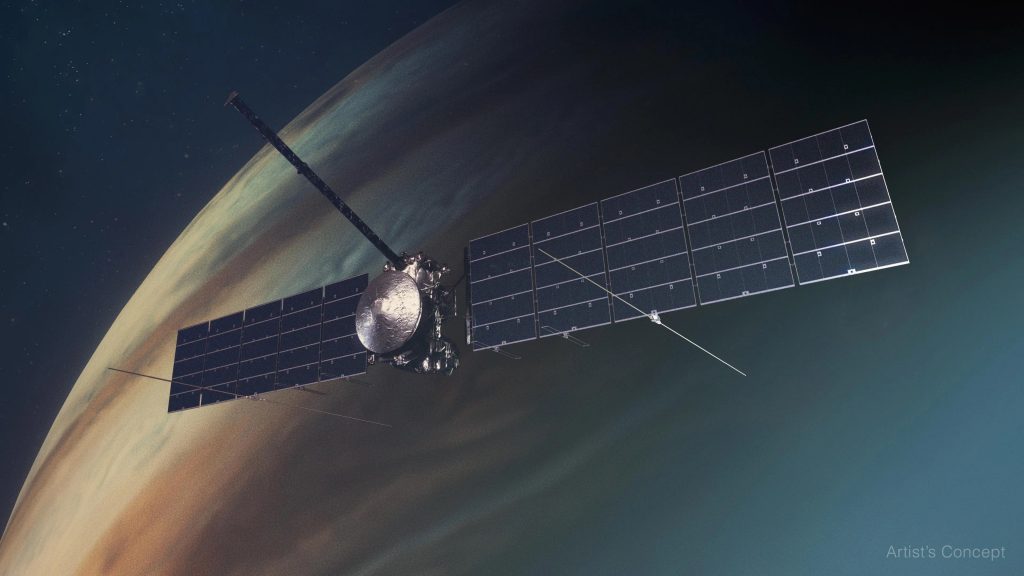
Europa Clipper Launch Party
UTIG Second Floor Ice Pod
October 14, 2024
10:35 am – 12:00 pm*

One of the great mysteries of the solar system is whether the ingredients for life exist below the surface of Jupiter’s icy ocean moon Europa. On Monday, Oct. 14, NASA is scheduled to launch Europa Clipper on a mission to find out. The habitability-hunting spacecraft is equipped with sensors designed to peer beneath Europa’s surface. Among them is an instrument that uses ice-penetrating radar technology developed at The University of Texas at Austin.
Known as REASON — Radar for Europa Assessment and Sounding: Ocean to Near-surface — the instrument, which was assembled by engineers at NASA’s Jet Propulsion Laboratory, will image the inside of Europa with reflected radar waves, much like a CAT scan.
Using technology originally developed by UT researchers to study Antarctica’s ice sheet, REASON will help the spacecraft look for the combination of water, organic compounds and energy that could support life beneath Europa’s ice shell. It is one of nine scientific instruments, and a gravity experiment, carried by Europa Clipper, which will conduct science that includes: collecting and examining the moon’s dust; analyzing its atmosphere; studying its magnetic field; measuring how it retains heat; and, looking for hot spots.
Unlike Mars, where abundant water may have flowed billions of years ago, scientists suspect that the energy, water and chemistry necessary to sustain life could exist on Europa today. Previous missions have shown that under Europa’s ice shell there is almost certainly a global ocean wrapped around a nutrient-rich, warm rocky interior. That makes Europa a primary target to look for life in our solar system.

“Europa has always been special,” said lead REASON investigator Don Blankenship of the University of Texas Institute for Geophysics (UTIG) at UT Jackson School of Geosciences. “If you’re looking for a habitat where life may have evolved, then Europa is the place you go.”
NASA will launch Europa Clipper aboard a SpaceX Falcon Heavy at NASA’s Kennedy Space Center in Florida. The launch period opens Oct. 14, 2024, at 11:06 a.m. CT. Once on its way, Europa Clipper will take five years to reach Jupiter. Blankenship and the UT radar team will watch the launch in person.
REASON carries radar technology that’s been developed and perfected at UTIG since the early 1990’s, when Blankenship and colleagues first began flying radar surveys over Antarctica. In Antarctica, the technology revealed the threat posed by the ice sheet’s doomsday glacier and imaged long-hidden craggy landscapes buried under miles of ice.
“UT’s role in this incredible flagship NASA mission builds on over a decade of expertise in the science and engineering of radar instruments and the sensing of ice sheets and sub-ice environments on Earth, Mars and now Europa,” said Demian Saffer, director of UTIG.
Europa Clipper is expected to arrive at Jupiter in 2030. To learn more about Europa Clipper and its 1.8-billion-mile journey, visit the Europa Clipper mission website. Information specific to UT’s development of the REASON instrument can be found at https://ig.utexas.edu/ut-reason.
For more information, contact:
Constantino Panagopulos, University of Texas Institute for Geophysics, 512-574-7376
Anton Caputo, Jackson School of Geosciences, 210-602-2085
Monica Kortsha, Jackson School of Geosciences, 512-471-2241.
